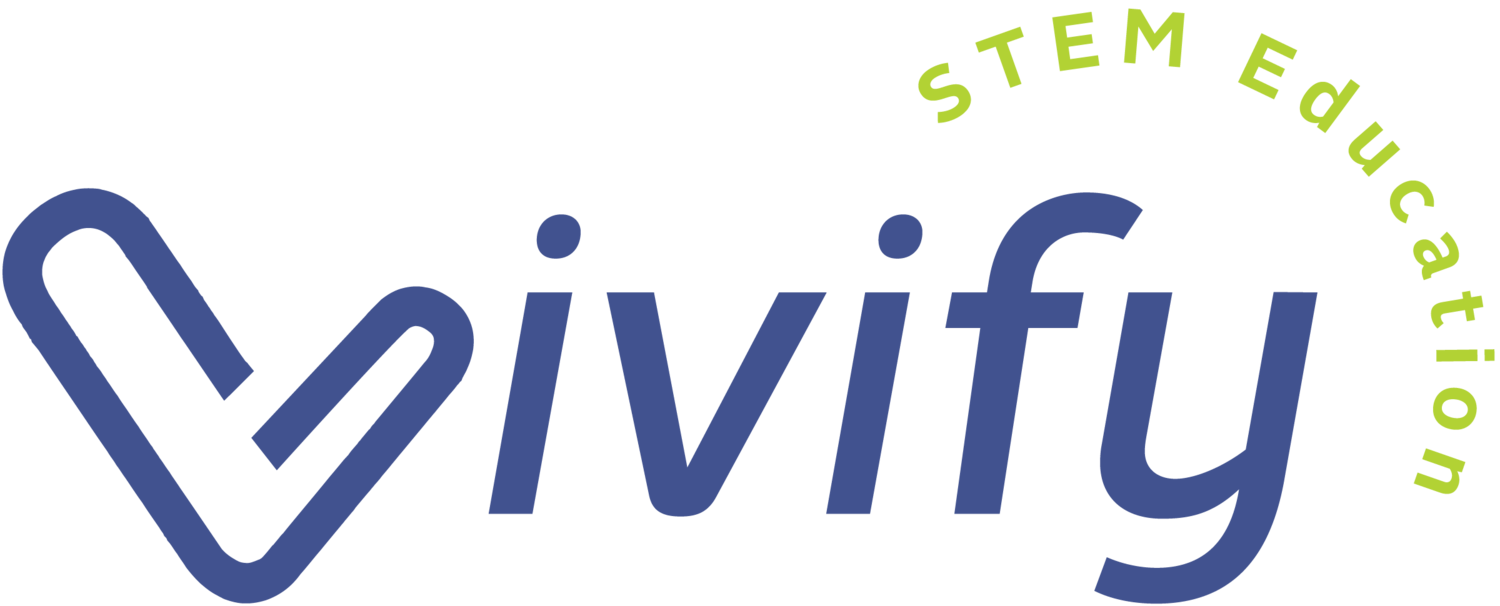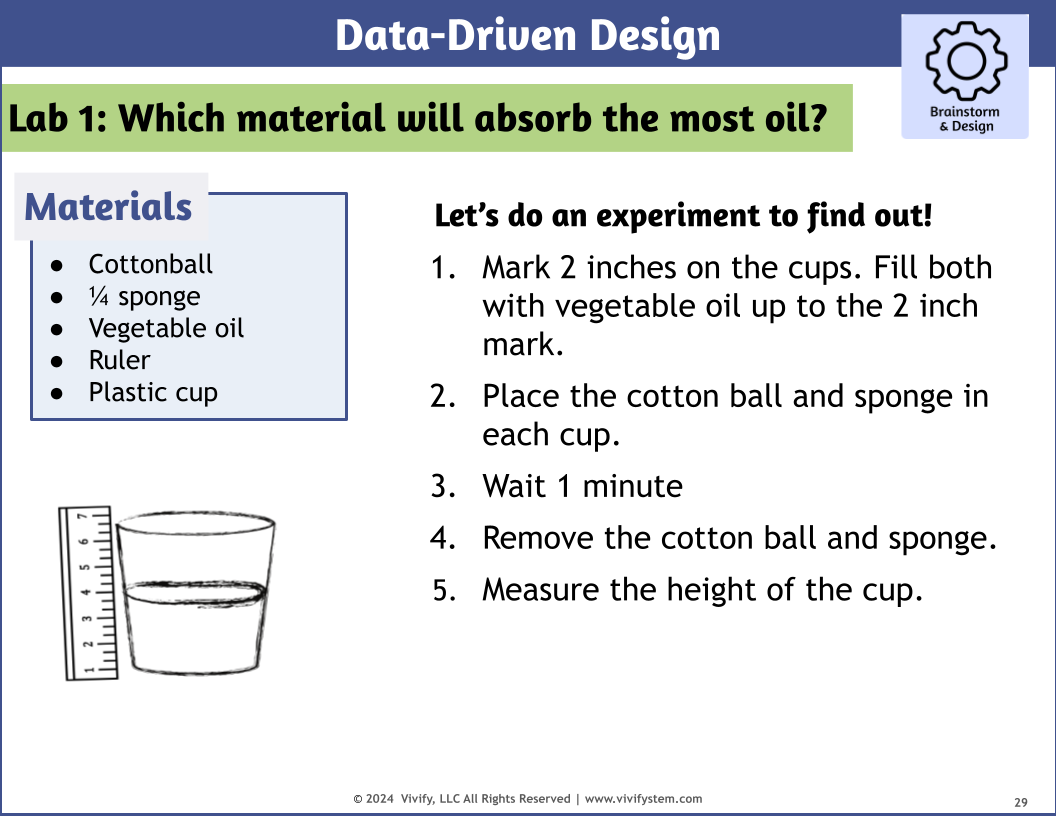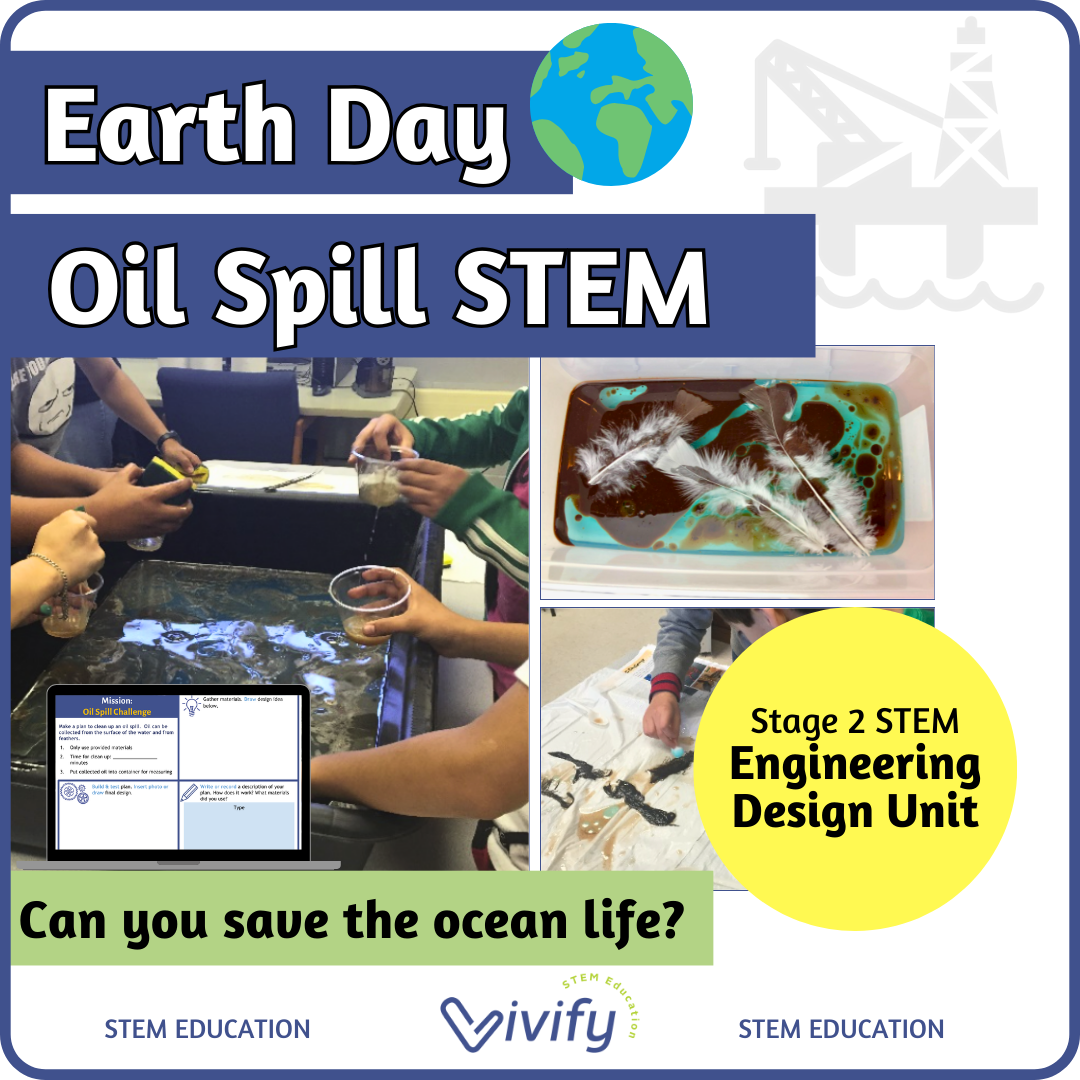Earth Day STEM: Oil Spill Challenge
Originally Published: April 20, 2016
Updated: April 2025
Need a fun and hands-on Earth Day activity? Challenge your students to an oil spill clean-up! Read on for a STEM challenge that teaches environmental consciousness, problem solving, and team work along with extension math problems that use measurement, percentages, and volume calculations. Our students loved this activity, and we think yours will too!
Each team will need to clean up "oil" from a simulated oil spill disaster that includes feathers to represent marine life. The learning objective is to increase understanding of an oil spill disaster and environmental consequences. This activity is a great Life Sciences challenge that also incorporates engineering and math concepts. Students are given this mission:
Your engineering company has been tasked with cleaning up a major oil spill disaster. You can only use the provided materials to clean up all the oil from the feathers and from the water. Place all collected oil into provided container.
Oil Spill Challenge Set-up
Below are the supplies I used for a group of 25 students split into 5 teams. The feathers may be reused if needed for each class. Note that feather dusters are a good source of feathers, but do not buy the microfiber ones! Also, this activity can get messy, and you may wish to put a tarp or plastic table clothes under each tray. Larger trays are more fun for a large group, but smaller foil baking pans can also be used.
150 Cotton Balls
15 sponges (large ones can be cut in half)
Vegetable oil: amount depends on tray; use a 1:4 oil to water ratio
25 plastic spoons
Dawn soap (yes, specifically Dawn)
15 plastic cups: to put soap and cotton balls for each team
Cocoa powder: to mix with oil and make it look like crude oil
50 bird feathers: Option 1 (pheasant), Option 2 (white goose), Option 3 (rooster), Option 4 (black goose)
Oil Spill Simulation. Tip: add blue food coloring to the water!
Real-World Connection
To set-up the challenge, I provided students with a handout that includes pictures from the BP Oil Spill disaster. We discussed the affects of an oil spill on marine plants and animals, and the pictures really bring to life the negative consequences of such a disaster. This helps set the context before starting the challenge.
Oil Spill Challenge
Depending on your time constraints, there are different options for completing this challenge. The first option is to give students about 15 minutes to clean as much of the oil from the water and feathers as possible. You can then qualitatively compare the bins and discuss the difficulties of removing the oil. Or students can be instructed to collect the oil in cups for measurement. Note that the oil will separate from the water, and a ruler can be used to measure the height of oil. Collecting the oil also allows you to complete several math extension problems that are provided with our product.
Option 2 is to make it a competition. For example, students can be tasked with collecting 5 inches of oil to successfully complete the challenge. Make sure to try this out beforehand to ensure it is doable! Because we had limited time, we used option 1 and had students clean as much as possible in 15 minutes. We then ended with a discussion on lessons learned including what were the most effective clean-up methods.
Data-Driven Design
For an extended classroom unit, you can have students conduct two investigations on material properties to support the final design solution. Each can be completed as a class demo or team lab.
Lab 1 - Absorption: Which material will absorb the most oil?
Introduce Science: Discuss absorption.
Prep: Gather the materials. Cut sponges into quarters to be about the same size as the cotton balls used. Mark 2 inches on the cups and fill to this mark with oil.
Cotton ball
¼ sponge
Vegetable oil
Ruler
2 Plastic cups
Predict: Ask students to predict which will absorb the most oil.
Conduct Lab: Place the cotton ball and sponge in each cup. Wait 1 minute. Remove the cotton ball and sponge. Measure the height. Oil absorbed = 2 inches - new height. Collect data and discuss results.
Apply the science: Discuss how these results will help students design the best solution for the oil spill challenge.
Lab 2 - Soap: Which brand of soap will work the best?
Introduce the science: Show the video and discuss how soap works. The goal is for students to select a brand of soap.
Prep: Label 3 brands of soap and 3 pie tins as A, B and C. Put 2 tablespoons of oil and ½ cup of room temperature water in each.
Conduct Lab: Have students add a tablespoon of soap to each tray and gently stir. Make sure soap matches with the letter on the tin. Wait 1 minute and observe.
Apply the science: The soap that breaks-up the most oil (less clumps) works the best. Ask students to select the brand of soap they want to use in their design solution.
Download the Full Teacher Guide!
For a complete guide on this challenge (completely updated in 2025!), check out our product on our website here. One buyer left us this comment:
"I LOVE YOUR PRODUCT! It is perfect and exactly what I would have liked to create, but you did it and so beautifully! I love the supporting materials and ties to math. Sooo cool! Great job!!!"
I hope your students enjoy this STEM Earth Day Challenge!
Earth Day is a great opportunity to combine STEM with environmental awareness! Need more Earth Day STEM? Find more STEM ideas and a freebie on our Earth Day STEM and a FREEBIE! blog post!
Note: Vivify LLC is a participant in the Amazon Services LLC Associates Program, an affiliate advertising program designed to provide a means for us to earn fees by linking to Amazon.com and affiliated sites at no extra cost to you.






